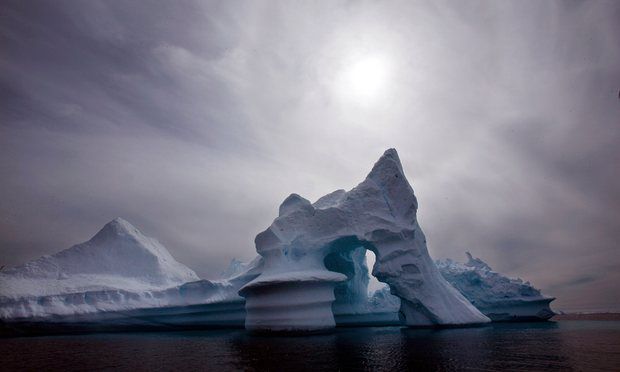Greenland's Ice Melt Accelerating as Surface Darkens, Raising Sea Levels
Published on by Naizam (Nai) Jaffer, Municipal Operations Manager (Water, Wastewater, Stormwater, Roads, & Parks) in Academic
Greenland’s vast ice sheet is in the grip of a dramatic “feedback loop” where the surface has been getting darker and less reflective of the sun, helping accelerate the melting of ice and fuelling sea level rises, new research has found.
The snowy surface of Greenland started becoming significantly less reflective of solar radiation from around 1996, the analysis found, with the ice absorbing 2% more solar energy per decade from this point. At the same time, summer near-surface temperatures in Greenland have increased at a rate of around 0.74C per decade, causing the ice to melt.
This winnowing away of the ice, exacerbated by soot blown on to the ice from wildfires, means that Greenland’s ice is stuck in what is known as a “feedback loop” that will make it ever more vulnerable to warming global temperatures. The study predicts that the ice surface reflectivity, or albedo, will drop by 10% or more by the end of the century, which will trigger further melting.
“It’s melting cannibalism, basically – it’s melting that’s feeding itself,” said lead author Marco Tedesco, of Columbia University’s Lamont-Doherty Earth Observatory. “Rising temperatures are promoting more melting, and that melting is reducing albedo, which in turn is increasing melting.
“It’s worrying because if the ice sheet continues to get darker, it becomes more sensitive to atmospheric warming. The impact of two weeks of sunshine with no clouds, for example, is far greater than it was 20 years ago. The ice is going to melt much more quickly, with more water flowing off on to the sea.”
In recent years, scientists have began to pick apart the complex, interrelated forces at play in the Arctic, which has experienced a 13.4% drop in minimum ice extent per decade, on average, since the 1980s. More than half of the Greenland ice sheet experienced some melting last summer, the largest annual melt since 2012 and well beyond the average melting seen over the past 35 years.
Tedesco’s research shows that as the surface of Greenland’s ice melts, old impurities, such as dust from erosion or soot that has been entombed for years, start to appear, darkening the surface.
If the summer is warm enough to remove all the snow, these dark impurities begin to spread across the surface, providing a far more heat-absorbent environment. At the same time, as this snow melts and then refreezes, the grains of snow get larger. These larger grains, invisible to the eye but detected by satellite’s infrared instruments, also create a less reflective surface.
These two processes are turning Greenland into a store, rather than a reflector, of solar energy, with consequences far beyond the icy wilderness. Water from the melting flows into the sea, contributing to rising oceans around the world. This process is unlikely to reverse given the increasing concentrations of greenhouse gases in the atmosphere.
“As warming continues, the feedback from declining albedo will add up,” Tedesco said. “It’s a train running downhill, and the hill is getting steeper.”
The research, published in the European Geosciences Union journal The Cryosphere , looked at satellite data from 1981 to 2012. The drop in reflectivity from 1996 was probably due to a change in atmospheric circulation that favoured warmer, moist air from the south. The scientists found there was no significant increase in soot from forest fires since 1997 to explain the darkening of the surface.
- This article was amended on 3 March 2016. An earlier version referred to the European Geophysical Union, instead of the European Geosciences Union.
- This article was amended on 4 March 2016 to clarify a statement that more than half of the Greenland ice sheet melted away last year. More than 50% of the ice sheet experienced some melting, but didn’t melt away completely.
Attached link
http://www.theguardian.com/environment/2016/mar/03/greenland-ice-sheet-melting-global-warming-feedback-loopTaxonomy
- Environment
- Glacier
- Climate Change